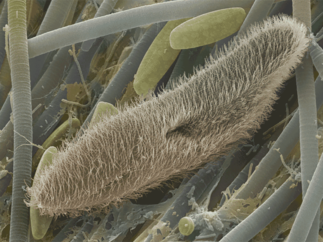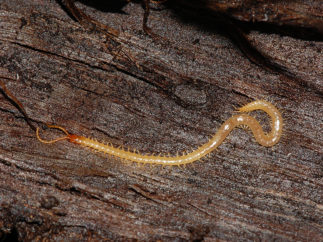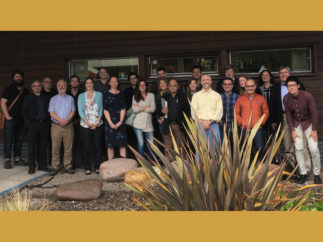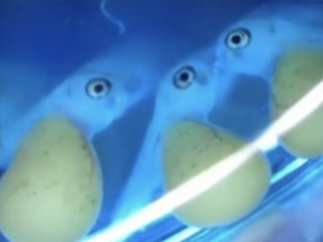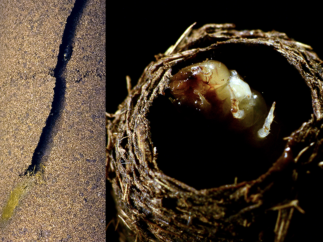David Houle and his colleagues must have been tired of flies. By the time they finished, they had been photographing and measuring over 50,000 fly wings. The results revealed that mutations commonly produced particular wing shapes, whereas others were rare. Equally painstaking work has quantified variability of the nematode vulva, butterfly eyespots, and mammalian teeth. In each case, some phenotypes pop up more frequently than others. Some that seem perfectly plausible never show up at all.
Structural inheritance: The parent as a developmental template
Structural inheritance is an often-neglected form of nongenetic inheritance. In their new book, Extended Heredity: A New Understanding of Inheritance and Evolution, authors Russell Bonduriansky and Troy Day describe numerous examples of structural inheritance, where structural features – and their mutilations – are inherited in subsequent generations through self-templating and related processes.
Developmental bias: An interview with Wallace Arthur
Wallace Arthur is an Emeritus Professor of Zoology at the National University of Ireland in Galway. He is a renowned evolutionary developmental biologist, working across disciplinary boundaries to understand the evolution of animal body plans and segmentation, a subject on which he has published numerous scientific papers and books, as well as popular science pieces. Wallace is one of the leading advocates of an important role for developmental bias in evolution, a view that he brought to prominence through his academic monograph Biased Embryos and Evolution and textbook Evolution: A Developmental Approach. Katrina Falkenberg is the science communication and outreach officer for the EES research program. She interviewed Wallace about developmental bias and its role in evolution.
‘Lá vou eu outra vez’ – As esperanças de Waddington finalmente serão cumpridas? – Parte III
por Erik L Peterson

D’Arcy Thompson and the Extended Evolutionary Synthesis
Last week I had the privilege of attending the workshop The Conceptual Legacy of “On Growth and Form” held in St Andrews UK, a (late) celebration of the centenary of publication of D’Arcy Thompson’s classic book (1917/1942).1 The meeting, organized by philosophers of biology Alan Love and Sahotra Sarkar, comprised an interesting mix of developmental biologists and philosophers. Like most evolutionary biologists, I had been vaguely aware that Thompson was an early pioneer of the use of mathematical approaches in biology. I also knew that his views were regarded as heretical by the establishment. However, prior to the workshop I had not read “On Growth and Form”, which was something of an embarrassment as D’Arcy is a famous alumnus of my university, St Andrews.
‘Lá vou eu outra vez’ – As esperanças de Waddington finalmente serão cumpridas? Parte II
por Erik L Peterson

United fronts: Unity, organization, and syntheses in the life sciences
In his book Consilience, E.O. Wilson described science as he saw it: one moving ever closer to shared agreement on theories, principles, concepts, and standards of evidence. For Wilson, the indications that science was unifying were obvious; “disciplinary boundaries within the natural sciences are disappearing, to be replaced by shifting hybrid domains in which consilience is implicit.” (1998, pp. 11) Yet it wasn’t just that the conciliation of science was underway. For Wilson, unification was something that should happen. Consilience went hand in hand with a humanistic vision of science: “when we have unified enough certain knowledge, we will understand who we are and why we are here.” (pp. 7)
‘Lá vou eu outra vez’ – As esperanças de Waddington finalmente serão cumpridas? Parte I
por Erik L Peterson

What’s hiding in Waddington’s epigenetic landscape? A case study in baby cichlids
In his 1957 book entitled The Strategy of the Genes, British scientist Conrad Hal Waddington noted that the genetic sequence does not map directly onto the phenotype we can observe in nature. Contrary to the gene-centric views held by many of his contemporaries, Waddington emphasised that phenotypes ultimately depend on the interaction between genes and an array of often environment-sensitive developmental factors he labelled as ‘epigenetic’.1,[*] Using Waddington’s famous ‘epigenetic landscape’ metaphor, the process that connects genotype to phenotype can be described as travelling downhill through a series of valleys from a starting point at the top of the landscape. Some valleys are deep and narrow, which means that the ultimate phenotype will be robustly produced across a wide range of rearing environments. In other cases, the directing landscape is flat and can lead to a variety of end points (i.e. different phenotypes) because the development of a trait is sensitive to environmental influences, often mediated by epigenetic factors.2 Waddington went on to propose that epigenetic factors could play a role in evolution, by allowing organisms to adjust to environmental conditions. Such adaptive phenotypes are subsequently stabilised through selection on genetic variation,3 a hypothesis now known as ‘plasticity-first’ evolution.4
La plasticità comportamentale e di sviluppo consentono agli scarabei stercorari di far fronte allo stress termico nel corso di generazioni
di Anna LM Macagno, Eduardo E Zattara, Armin P Moczek & Cris C Ledón-Rettig

